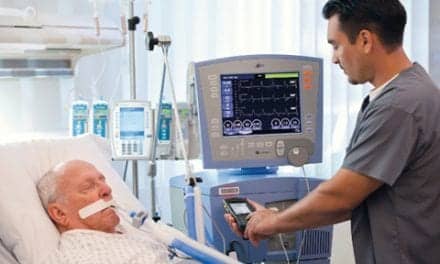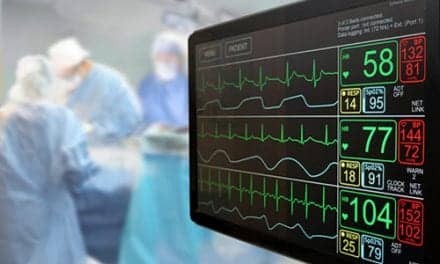A look at some of the most effective clinical efforts to prevent ventilator-associated lung injuries for pediatrics.
Ventilators save lives, but they can also do real damage. Side effects of mechanical ventilation include over-distension of the lungs (volutrauma or barotrauma); biological cascade resulting in inflammation (biotrauma); damage caused by continuously forcing open collapsed lung units (atelectrauma); infection; and pulmonary edema. Even noninvasive ventilation carries risks, most notably pressure injuries from face or nasal masks.
These injuries are called ventilator-associated (VALI) or ventilator-induced lung injuries (VILI). An article in Anaesthesiology Intensive Therapy1 explains the difference: “VALI refers to exacerbation of pre-existing lung injury due to factors related to mechanical ventilation, whereas VILI is used for injury to previously unaffected lungs or intentional experimental lung injury in animals.”
Risks of mechanical ventilation have been recognized as early as the 18th century.2 “It has been suggested to me by some that a pair of bellows might possibly be applied with more advantage in these cases, than the blast of a man’s mouth, but if any person can be got to try the charitable experiment by blowing, it would seem preferable to the other,” wrote English physician John Fothergill in 1744. “The lungs of one man may bear, without injury, as great a force as those of another man can exert; which by the bellows cannot always be determin’d.”3
Positive pressure ventilation was eventually embraced, but the risks suspected by Fothergill have proven real. They are especially tough for pediatricians to contend with, given that most lung protective strategies have been tested in adults, rather than children.
“There are huge differences in respiratory physiology between especially young children and adults,” Martin Kneyber, MD, PhD, a pediatrician at the University Medical Center of Groningen in the Netherlands told RT in an email. “For instance, lung volumes differ, the elastic properties of the chest wall are different (young children have much more elastic chest wall) and the structure itself of the lung is different during the first two years of life. Next to this, there are huge differences in immune response to injurious stimuli; in young children the immune response is mainly anti-inflammatory rather than pro-inflammatory.”
The lung protective strategies currently available in pediatrics are similar to what is used in adult care, which Kneyber said is acceptable—to a point. “The optimal tidal volume is unclear as well as the level of PEEP that has to be set. So I think that both for children and adults an individualized titration of mechanical ventilation is indicated. Also, volume controlled ventilation—often used in adults—is not really suitable for children with uncuffed endotracheal tubes because of leakage. That’s why in peds we mainly use pressure controlled ventilation. By using pressure limitation, the respiratory system mechanics are going to dictate the allowable tidal volume: the smaller the lung inflatable volume, the smaller the Vt will be for a given pressure,” he wrote.
Key components of lung protection rely on low tidal volumes and adequate positive end expiratory pressure (PEEP.) That strategy has been embraced relatively recently.
“Is it better to use a smaller tidal volume and let the partial pressure of arterial carbon dioxide (PaCO2) increase despite the associated risks (eg increased intracranial hypertension from respiratory acidosis) or use larger tidal volumes to normalize the PaCO2 but increase the risk of lung injury?” ask the authors of a 2013 review of VILI in the New England Journal of Medicine.4 “Whereas previously the answer might have been to increase the tidal volume, current philosophy has shifted to a stronger focus on protection of the lung with the use of smaller tidal volumes.”
A seminal study5 of 861 adult patients with acute lung injury (ALI) and acute respiratory distress syndrome (ARDS) set today’s tidal volume standard: 6 mL/kg. The authors found such a stark difference in terms of mortality and time spent on the ventilator in patients treated with 6 mL/kg compared with 12 mL/kg that they ended the study early. As important as this information has proven to be, the authors did not test a gradient of tidal volumes and did not test tidal volumes in children. That leaves behind a nagging question: might other tidal volumes be better for some patients, particularly pediatric patients? A review co-authored by Kneyber concludes, “At present, there are no recommendations related to an optimal Vt that can be supported by rigorous evidence, and our review does not provide any definitive answers.”6 Other authors feel more confident about using the 6 ml/kg standard in pediatrics but call for the study of even smaller tidal volumes.7
While small tidal volumes are now considered standard of care in all ages, experts say they should be paired with maintaining appropriate PEEP levels. Since small tidal volumes may not exert enough pressure to open lung units, even healthy parts of the lung could collapse. A PEEP that is too low may not be enough to keep alveoli open. Repeatedly opening, or recruiting, collapsed alveoli can be dangerous. “During positive pressure ventilation, there are alveolar units in varying degrees of collapse adjacent to areas of fully open alveoli. When inflated, shear stresses develop between open and closed alveoli that may be injurious,” explain the authors of a 2009 review.8 “Cyclical opening and closure of alveolar units can also result in the generation of shear forces. Both these mechanisms can cause endothelial and epithelial injury leading to loss of integrity of the alveolar capillary membrane, bacterial translocation from the lung, and cellular inflammatory damage.”
Successful recruitment strategies will pair low tidal volumes with appropriate PEEPs to avoid complications like shearing injuries and oxygen toxicity. In a 2010 review,9 the authors suggest PEEPs in the range of 8-20 cm H2O, depending on the patient. Still, despite the fact that “sustained inflation and manipulating PEEP are the two most common methods of lung recruitment used in the literature,” the authors write, “a consensus has not been achieved regarding which recruitment manoeuvre results in an increase in optimal regional ventilation. No empiric guidelines exist to determine if a particular recruitment maneuver is better suited to a particular lung ‘picture’ nor is there an absolute distinction between goals of treatment.”
According to Shekhar Venkataraman, MD, medical director of respiratory therapy at Children’s Hospital of Pittsburgh, such guidelines are the “holy grail” of safe mechanical ventilation. “We need better tools to estimate whether we have optimally recruited the lung,” he told RT. Ideally, he said, a clinician would be able to determine the best possible recruitment outcome for a particular lung under particular parameters and then program the machine to carry out those wishes.
One of the major problems facing the study of mechanical ventilation strategies in children is a statistical one. Since the rate of mortality in pediatrics from ARDS is so low, it would be hard to gather enough data to recommend one strategy over another. One study to test the feasibility of such a trial was the Pediatric Acute Lung Injury Mechanical Ventilation (PALIVE) study, published in 2013. Investigators collected data from 59 pediatric intensive care units in 12 countries in North America and Europe. Of about 3800 children screened, 4.3% met the criteria the authors had set, indicating that future studies would require an international pool of patients from at least that many institutions.
They also found that ventilation strategies and adjunct therapies employed at these ICUs varied widely. Furthermore, clinicians did not always do what they said they would do, a result elucidated by a survey sent to participating institutions before study results were revealed. The survey contained three hypothetical case studies and asked clinicians what parameters they would use.
“[M]ost pediatric intensivists reported they would use tidal volumes between 5 and 8 mL/kg and none of them reported using high tidal volumes (>10 mL/kg). However, in the PALIVE study, 25% of patients on invasive mechanical ventilation were ventilated with expiratory tidal volumes greater than 10 mL/kg,” the authors wrote.10
The issue is further complicated by the fact that the tidal volume measured on the ventilator may not reflect the volume delivered to the lung, and the difference can be bigger in children than in adults, Venkataraman said. “We showed that in simulating lungs that are very stiff you can lose as much as 50% of the tidal volume in the circuit and only 50% goes to the patient,” Venkataraman said, adding that clinicians at CHOP now measure the tidal volume at the end of the endotracheal tube.
Another consequence of lower tidal volumes is relatively high levels of carbon dioxide in the blood. This is a strategy known as “permissive” or even “therapeutic” hypercapnia (or hypercarbia)—the latter description an acknowledgement of its potential benefits. “Reasonably elevated CO2 figures do not cause systemic harm when adequate compensatory mechanisms are effective, resulting in a normal or near normal pH,” write the authors of an Australian review published in 2010. “Indeed, hypercapnia may exert a protective effect on the lung.” The mechanism, they explain, is thought to be the reduction of free radicals and improvement of cellular oxygenation.
But the authors warn, “it is important to maintain adequate PEEP alongside hypercapnia to ensure that the elevation of CO2 is a direct result of a reduced minute volume rather than a progressive decrease in functioning alveolar units.”
A strategy clinicians have employed with some success is placing the patient in the prone position. Studies have shown an improvement in oxygenation for young patients in this position, although none so far have demonstrated a reduction in mortality.11 Possible explanations for this outcome include the opening up of the dorsal portions of the lungs, redistribution of fluids, better ventilation-perfusion matching, and the easing of pressure from the diaphragm and heart.
Despite the challenges facing pediatric ventilation, Kneyber is optimistic that advancements in technology can help doctors treat patients. “I hope that esophageal pressure manometry and noninvasive techniques such as inductance plethysmography, EMG, and EIT are going to help us in the individual titration of MV,” he wrote.
But mostly what we need is more research, he said. He and his colleagues at The European Society for Paediatric and Neonatal Intensive Care are currently drafting ventilation guidelines, which they expect to be published this summer. “It is very shocking to see that there is hardly any data supporting our approach to ventilation in children,” he wrote. “One of the take home messages of this guideline will be that we need to undertake a lot of studies on every aspect of pediatric mechanical ventilation. MV is one of our key business in the pediatric ICU, but it is not an art nor a science. It is just local belief.” RT
Rose Rimler is associate editor of RT. For further information, contact [email protected]
References
- Kuchnicka, K. and Maciejewski, D. “Ventilator-associated lung injury.” Anasthesiology Intensive Therapy. 2013; 5(3):164-70. https://www.ncbi.nlm.nih.gov/pubmed/24092514
- Slutsky, A. “History of Mechanical Ventilation. From Vesalius to Ventilator-induced Lung Injury.” American Journal of Respiratory and Critical Care Medicine. 2015; 191(10); 1106-1115. http://www.atsjournals.org/doi/full/10.1164/rccm.201503-0421PP
- Fothergill, J. “Observations on a Case Published in the Last Volume of the Medical Essays, &c. of Recovering a Man Dead in Appearance, by Distending the Lungs with Air.” Philosophical Transactions 1744; 43(472-477 275-281.) http://rstl.royalsocietypublishing.org/content/43/472-477/275.full.pdf+html
- Slutsky, A. and Ranieri, V.M. “Ventilator-induced lung injury.” New England Journal of Medicine. 2013; 369 (22): 2126-2136. http://www.medicine.wisc.edu/sites/default/files/ards_-_vili_nejm_review_2013.pdf
- Acute Respiratory Distress Syndrome Network. “Ventilation with Lower Tidal Volumes as Compared with Traditional Tidal Volumes for Acute Lung Injury and the Acute Respiratory Distress Syndrome.” New England Journal of Medicine. 2000; 342:1301-1308. http://www.nejm.org/doi/full/10.1056/NEJM200005043421801#t=abstract
- Kneyber, M., Zhang, H., and Slutsky, A. “Ventilator-induced Lung Injury: Similarity and Differences between Children and Adults.” Critical Care Perspective. 2014; 190(3): 258-265.
- Hanson, J.H. and Flori, H. “Application of the acute respiratory distress syndrome network low-tidal volume strategy to pediatric acute lung injury.” Respiratory Care Clinics of North America. 2006; 12(3):349-57. https://www.ncbi.nlm.nih.gov/pubmed/16952797
- Chacko, J. and Rani, U. “Alveolar recruitment maneuvers in acute lung injury/acute respiratory distress syndrome.” Indian Journal of Critical Care Medicine. 2009; 13(1): 1–6. https://www.ncbi.nlm.nih.gov/pmc/articles/PMC2772255/
- Jauncey-Cooke et. al “Lung protective ventilation strategies in paediatrics—A review.” Australian College of Critical Care Nurses. 2010; 23; 81—88
- Santschi, M. et. al “Mechanical Ventilation Strategies in Children With Acute Lung Injury: A Survey on Stated Practice Pattern.” Pediatric Critical Care Medicine.2013;14(7): e332-e337. http://www.medscape.com/viewarticle/811234
- Jauncey-Cooke et. al 2010.











